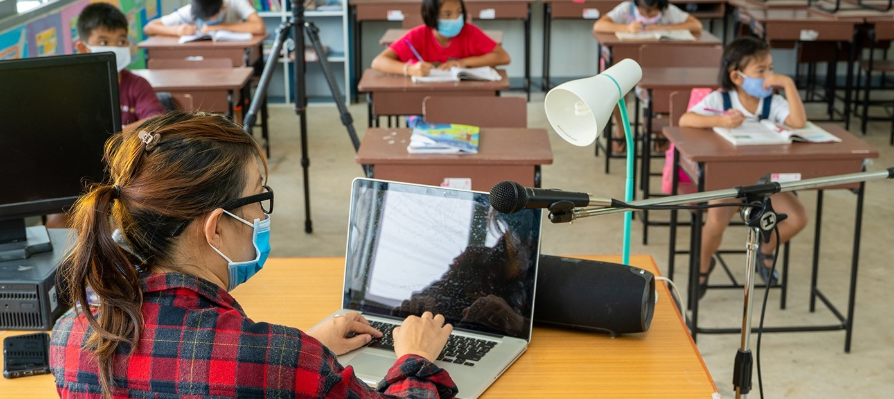UNESCO: Supporting teachers in back-to-school efforts after COVID-19 closures: A toolkit for school leaders
date:2020-06-23 15:57author:adminsource:UNESCOviews:

UNESCO, the Teacher Task Force and the International Labour Organization have released a toolkit to help school leaders support and protect teachers and education support staff in the return to school. The toolkit complements the joint Framework for Reopening Schools and the Task Force policy guidance released last month. It breaks down the seven dimensions identified in the policy guidance into a series of actionable guiding questions and tips.
Supporting teachers and staff as schools reopen
The toolkit recognizes the importance of local context. In many countries the pandemic is evolving daily. Local decisions about when to reopen schools will be determined by a broad range of considerations; what is right for one school may not be right for another. In all contexts, school leaders will need to set priorities and recognize that trade-offs may be needed. To facilitate physical distancing, for example, schools may have to reduce the number of teachers and students on site by reopening selectively and staggering the return by grade and/or level. They may also have to privilege certain population segments or learner groups, such as vulnerable and at-risk learners and the children of essential workers. In some cases, closing schools again may have to be considered. Alternatively, available resources may be reallocated to ensure the readiness of school buildings and safety equipment, or to better prepare teachers and education support staff.
The importance of consultation and communication
Teachers, school staff and their representative organizations should be actively involved in setting out policies and plans for school reopening, including occupational safety and health measures to protect personnel. Communication with teachers, learners and education support staff about reopening can ensure clarity about expectations and highlight their role in the success of safe, inclusive return-to-school efforts, including overall well-being, and the teaching and learning recovery process.
As decisions to reopen schools are made by central authorities, it will be important to communicate early, clearly and regularly with parents and school communities to understand their concerns and build support for plans to reopen. Parents will want to know what safeguards have been put in place to minimize health risks. They will also need to hear about the school’s ongoing commitment to key educational principles and goals. As teachers are often the first point of contact with parents, they will need to be prepared to ensure everyone is informed continually.
Using teachers’ expertise in the new classroom environment
In most contexts, when children return to classrooms it will not be business as usual. In some cases, only some students will be present, or there will be double shifts. Lesson plans, assessment and overall curricula will be adapted, and remedial lessons will need to be developed and deployed.
School leaders need to ensure teachers are empowered to make decisions about teaching and learning. They can work with teachers to adjust curricula and assessment based on revised school calendars and instructions from central authorities. School leaders should also support teachers to reorganize classrooms to allow for accelerated learning and remedial responses, while adhering to regulations on physical distancing.
Teachers’ key role in recognizing learning gaps and formulating pedagogical responses remains critical. This is especially true for vulnerable groups, including low-income families, girls, those with special needs or disabilities, ethnic or cultural minorities and those living in remote rural areas with no access to distance education.
To manage the return to school, it is important for teachers and education support staff to receive adequate professional preparation to assume their responsibilities and meet expectations. Training, peer-to-peer learning and collaboration with other teachers, both within the school and more broadly, will be critical. Such support is particularly important where additional strain may be placed on teachers’ time if they are required to conduct both face-to-face and distance education.
- Access the toolkit
- Teachers Taskforce

